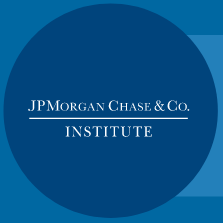 A new report from the JPMorganChase & Co. Institute finds that American families carry more than $1.5 trillion in student loan debt. This debt provided many students with the opportunity to pursue higher education, but remains for others a large, potentially crippling, financial burden, according to the authors.
A new report from the JPMorganChase & Co. Institute finds that American families carry more than $1.5 trillion in student loan debt. This debt provided many students with the opportunity to pursue higher education, but remains for others a large, potentially crippling, financial burden, according to the authors.
The research of banking data, credit bureau records, and public records on race and ethnicity of more than 300,000 people produced data on the income, demographics, debt balances, and student loan payments of the individuals surveyed.
The data shows that nearly 10 percent of Blacks with student debt had never made a payment. This is nearly four times the rate for Whites with student loans. Most striking is the fact that 13.1 percent of Blacks with student loans are on track to never pay off their loans. These students are accumulating more interest than the payments they are making and thus their balances increased over the previous 12 months. This is about double the rate for Whites.
The report finds that for 11.3 percent of Black borrowers, it will take more than 20 years to pay off their student loan debt. For Whites, it will take more than 20 years for 6.3 percent of student loan borrowers. Forty percent of White borrowers are projected to pay off their loans within five years, compared to 31.8 percent of Blacks.
The authors conclude that “Black borrowers appear to experience more challenging circumstances related to student loan debt relative to White borrowers, according to every metric we explored: payment burden, payment help received, payment shortfall, deferral rates, and time to pay off. Compared to White borrowers, Black borrowers are much more likely to be significantly behind on their repayments and twice as likely to be experiencing an increase in their loan balances. That is, Black borrowers are more likely to face a student debt ‘trap,’ due in part to the fact that they have lower incomes and asset holdings and likely fewer people in their network who may be able to assist with repayment when they need help. Thus, as currently constituted, student loan credit markets threaten to amplify rather than mitigate racial wealth gaps across generations.”
The full report, Student Loan Debt: Who is Paying it Down, may be downloaded by clicking here.










